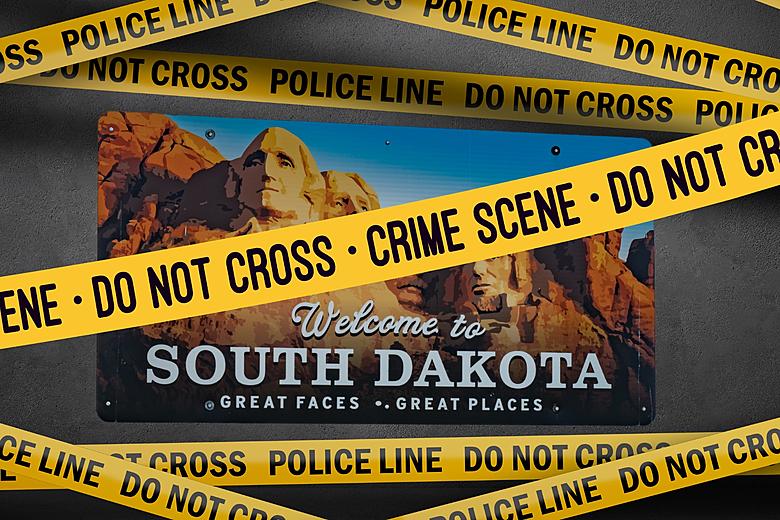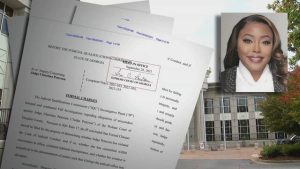South Dakota, known for its stunning landscapes and rich history, is generally considered a safe state. However, like any other state, it has its share of crime hotspots. According to the latest FBI crime data, certain cities in South Dakota have higher crime rates than others. This article delves into the most dangerous cities in South Dakota, providing detailed statistics, facts, and insights to help residents and visitors stay informed.
South Dakota’s reputation as a peaceful state often overshadows the crime issues that persist in some of its cities. By examining the latest FBI crime data, we can identify the cities with the highest crime rates and understand the factors contributing to these statistics. This knowledge is crucial for residents, potential movers, and tourists who wish to stay safe and informed.
Overview of FBI Crime Data
The FBI collects and publishes crime data annually through the Uniform Crime Reporting (UCR) program. This program compiles data on various types of crime, including violent crimes (murder, rape, robbery, aggravated assault) and property crimes (burglary, larceny-theft, motor vehicle theft, arson). The UCR data provides a comprehensive overview of crime trends across the United States, enabling us to identify patterns and hotspots.
Methodology for Determining Dangerous Cities
To determine the most dangerous cities in South Dakota, we analyzed the latest FBI UCR data, focusing on violent and property crime rates per 1,000 residents. Cities with populations above 5,000 were included in the analysis to ensure statistical relevance. The cities were then ranked based on their combined crime rates, with violent crimes given higher weight due to their severity.
Detailed Analysis of the Most Dangerous Cities in South Dakota
1. Rapid City
Crime Statistics
- Population: 77,000
- Violent Crime Rate: 7.3 per 1,000 residents
- Property Crime Rate: 35.7 per 1,000 residents
Analysis
Rapid City, the second-largest city in South Dakota, tops the list as the most dangerous city in the state. With a violent crime rate significantly higher than the national average, residents and visitors need to be cautious. Aggravated assaults and robberies are particularly prevalent, contributing to the high violent crime rate. Property crimes, including larceny-theft and motor vehicle theft, also occur frequently.
Notable Incidents
In recent years, Rapid City has seen several high-profile violent incidents, including shootings and armed robberies, which have heightened public awareness and concern about safety.
2. Sioux Falls
Crime Statistics
- Population: 195,000
- Violent Crime Rate: 6.5 per 1,000 residents
- Property Crime Rate: 29.1 per 1,000 residents
Analysis
Sioux Falls, the largest city in South Dakota, ranks second on the list. While its violent crime rate is lower than Rapid City’s, it is still concerning. The city experiences a mix of violent crimes, with aggravated assaults being the most common. Property crimes are also a significant issue, with burglary and larceny-theft being the most reported offenses.
Notable Incidents
Sioux Falls has faced challenges with gang-related violence and drug trafficking, which have contributed to the city’s crime rates. Law enforcement agencies continue to address these issues through targeted operations and community outreach programs.
3. Aberdeen
Crime Statistics
- Population: 28,000
- Violent Crime Rate: 5.2 per 1,000 residents
- Property Crime Rate: 25.3 per 1,000 residents
Analysis
Aberdeen, a smaller city in northeastern South Dakota, ranks third. The city’s violent crime rate is lower than that of Rapid City and Sioux Falls but remains a concern. Aggravated assaults and robberies are the primary contributors to the violent crime rate. Property crimes, particularly larceny-theft and burglary, are also prevalent.
Notable Incidents
Aberdeen has experienced a series of burglaries and thefts, which have impacted local businesses and residents. Community policing efforts are ongoing to improve safety and reduce crime rates.
4. Mitchell
Crime Statistics
- Population: 15,000
- Violent Crime Rate: 4.9 per 1,000 residents
- Property Crime Rate: 23.7 per 1,000 residents
Analysis
Mitchell, known for the Corn Palace, is the fourth most dangerous city in South Dakota. The violent crime rate in Mitchell is driven by incidents of aggravated assault and domestic violence. Property crimes, such as burglary and motor vehicle theft, also contribute to the city’s overall crime rate.
Notable Incidents
Mitchell has seen a rise in drug-related crimes, which have contributed to the overall increase in violent and property crimes. Law enforcement agencies are working on strategies to combat drug trafficking and related criminal activities.
5. Watertown
Crime Statistics
- Population: 22,000
- Violent Crime Rate: 4.5 per 1,000 residents
- Property Crime Rate: 21.9 per 1,000 residents
Analysis
Watertown, a city in eastern South Dakota, rounds out the list as the fifth most dangerous city. The city’s violent crime rate is lower than the others on the list, but it is still higher than the national average. Aggravated assaults and robberies are the main violent crimes reported. Property crimes, especially larceny-theft and burglary, are also significant issues.
Notable Incidents
Watertown has faced challenges with domestic violence and theft, impacting the overall safety of the community. Efforts to increase community engagement and awareness are part of the city’s strategy to reduce crime.
Factors Contributing to High Crime Rates
Several factors contribute to the high crime rates in these South Dakota cities:
Economic Disparities
Economic challenges, including poverty and unemployment, often correlate with higher crime rates. Cities with higher levels of economic hardship tend to experience more criminal activity as residents struggle to make ends meet.
Substance Abuse
Drug and alcohol abuse are significant contributors to crime. Many of the cities on this list have seen increases in drug-related crimes, which often lead to other criminal activities such as theft and violence.
Gang Activity
Gang presence and related violence have been reported in several cities, particularly Sioux Falls and Rapid City. Gangs contribute to violent crime rates through activities such as drug trafficking, assaults, and robberies.
Law Enforcement Resources
The availability and allocation of law enforcement resources play a crucial role in crime prevention and reduction. Cities with limited police presence or inadequate funding for law enforcement may struggle to effectively address and prevent crime.
Efforts and Initiatives to Reduce Crime
Community Policing
Community policing initiatives aim to build trust and cooperation between law enforcement and residents. By fostering positive relationships, police can better understand community needs and work collaboratively to prevent crime.
Economic Development Programs
Investing in economic development and job creation can help alleviate some of the underlying causes of crime. Cities that provide opportunities for education, employment, and economic growth may see reductions in crime rates.
Substance Abuse Treatment and Prevention
Addressing substance abuse through treatment programs and preventive measures is crucial in reducing drug-related crimes. Cities that offer accessible and effective treatment options can help individuals overcome addiction and reduce crime rates.
Youth Engagement Programs
Engaging youth in positive activities and providing support and mentorship can prevent them from turning to criminal activities. Programs that offer educational and recreational opportunities can help keep young people on the right track.
Conclusion
While South Dakota is generally considered a safe state, certain cities experience higher crime rates than others. Rapid City, Sioux Falls, Aberdeen, Mitchell, and Watertown are currently the most dangerous cities in the state according to the latest FBI data. Understanding the factors contributing to crime and implementing effective strategies to address them is crucial for improving safety and quality of life in these communities. By working together, residents, law enforcement, and community leaders can create a safer environment for everyone in South Dakota.



